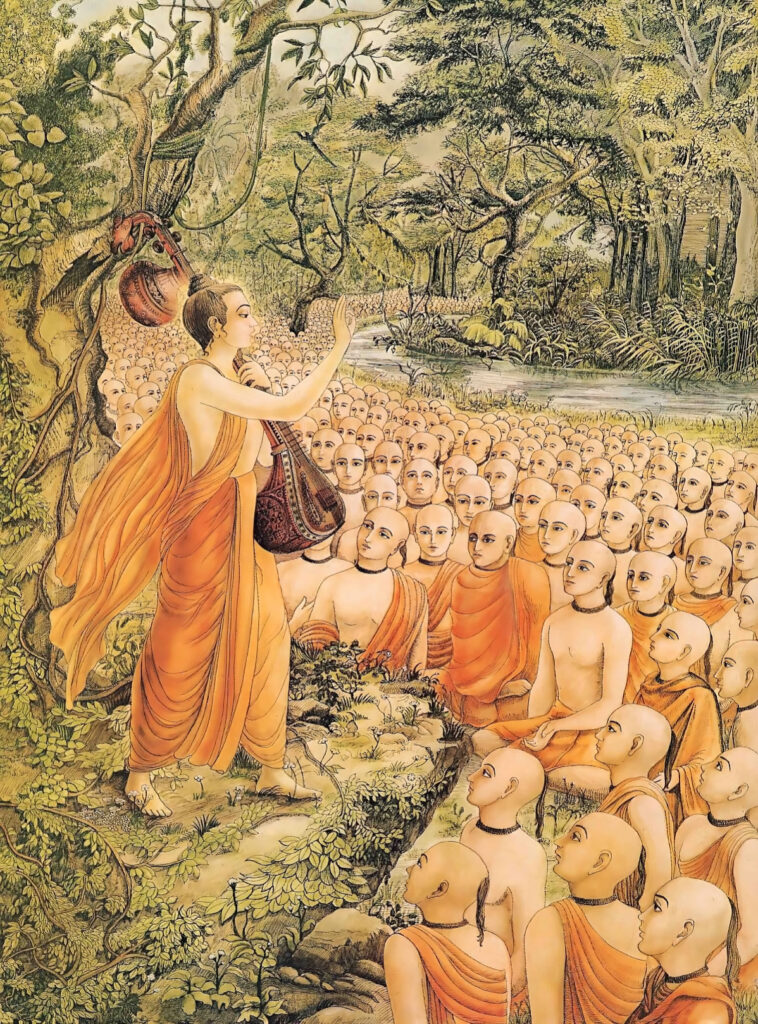In his books, Srila Prabhupada makes clear his opinion about modern societies, defining them as degraded and ultimately uncivilized. The materialistic lifestyle progressively destroys moral values and kills the soul, in the sense that it destroys one’s interest in religious practices.
However, Srila Prabhupada was also pragmatic in utilizing whatever good facilities modern society could provide to facilitate his preaching. He was using planes and cars to move around, using printing presses to publish his books, and so on. At the same time he criticized the democratic system of government but also appreciated the freedom it offers, which allowed him to propagate Krsna Consciousness more or less freely in countries like the United States, which offered environments much more favorable than dictatorial regimes, like in the Soviet Union and China. In this way, he was applying the principle of using what is favorable and rejecting what is unfavorable.

We can argue that despite all the problems we have in modern societies if we had to go back in time, going back to the Middle Ages, the environment would be much more hostile to the propagation of Krsna Consciousness. You can imagine what would happen if a group of Brahmacaris, dressed in dhotis and with sikas would start doing a harinama in a Spanish city during the times of the Inquisition, for example.
Medieval societies offered an environment that would be very hostile to the propagation of the sankirtan movement, including religious intolerance, extremely low educational levels, absolutist regimes, constant wars, lack of facilities for traveling, and so on. It would be extremely difficult to conduct public chanting due to religious intolerance, it would not be possible to distribute books due to the extremely low level of literacy, and even verbal preaching would be complicated since people lacked a rich enough vocabulary necessary for understanding complete philosophical concepts. This persisted even after the Illuminism (that didn’t have much effect out of the learned circles) and in fact, changed only with the modern age.
We can see that although Lord Caitanya showed a desire to preach also outside of India, He didn’t do it personally, possibly due to the unfavorable circumstances, preferring to delegate this task to Srila Prabhupada. As he predicted: “Taking the sharp sword of nama-sankirtana, I will root out and destroy the demoniac mentality in the hearts of all the conditioned souls. And if some sinful people escape and giving up dharma go to far off countries, my Senapati Bhakta will go there to deliver them.”
Apart from technological advancements that facilitated communication and the spread of information, as well as improvements in terms of literacy, modern societies offer relatively open borders and facilities to preach, as well as religious freedom and freedom of speech. Another positive point is that in modern times we have huge populations compared with the previous centuries, which dramatically increase the number of candidates to receive the mercy of Mahaprabhu. A reference from the Padma Purana (Uttarakhanda 71.107) shows that this was not accidental:
“The Supreme Lord said, “O Siva, by writing speculative scriptures make people averse to Me and hide my glories, this will give rise to population.”
This verse hints that there is a superior plan behind the modern age. As people became more materialistic, rejecting the traditional systems of religion, they became more propense to economic and technological advancement, which in turn led to a dramatic increase in population. The population of Europe, for example, increased from about 80 million in the 14th century to about 750 million nowadays. Simultaneously, the search for economic development led to the appearance of facilities that are now used by preachers all over the world and created problems that make many unsatisfied with the modern lifestyle and thus propense to start their spiritual lives.
This process started with the Industrial Revolution, but the basic facilities were not available until the 1960s, which was exactly the time when Prabhupada went to the United States to start his movement. Had he instead gone to Spain in the 16th century, he would surely have found a much more hostile environment.
Things don’t happen by chance. Although Krsna doesn’t interfere with the basic free will of the souls, He can adjust the situation to give facilities for His devotees to fulfill their missions. It was not by chance that Kuruksetra was chosen as the battlefield for the battle of Kuruksetra. This was done by the will of the Lord since the sacred place would give better conditions for His devotees to defeat the evil forces led by Duryodhana. Similarly, the modern age is not an accident, but part of a higher plan to create the conditions for the spread of the sankirtan movement, giving us a realistic chance of starting the predicted Golden Age.
It’s clear that the modern age will not continue forever. Eventually, the exhaustion of natural resources, combined with climate change, wars, and other factors will bring modern societies to their knees. Societies in the following centuries will be again agrarian in nature. However, if we can properly do our job of spreading Krsna Consciousness now, there is a good chance that these will be Vaishnava societies based on cow protection, with qualified Brahmanas guiding the society and qualified Ksatriyas protecting it, instead of the barbarism of the middle ages.
There is a plan behind everything, and we can choose between being part of it or not. As Krsna explains to Arjuna in the Bhagavad-Gita (11.33-34): “Therefore get up. Prepare to fight and win glory. Conquer your enemies and enjoy a flourishing kingdom. They are already put to death by My arrangement, and you, O Savyasācī, can be but an instrument in the fight.”
